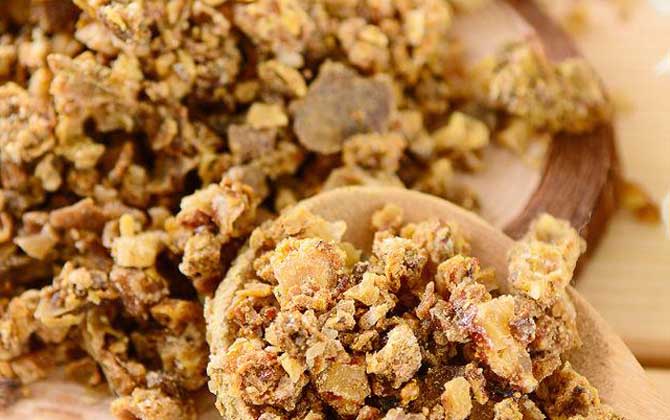Supercritical CO2 extraction of artepillin C from propolis
What is Propolis?
Propolis is a chemically complex sticky “glue” collected from beehives. It contains resins collected from the buds and leaves of plants, volatile oils, and wax.
The exact composition of propolis varies from hive to hive and from season to season, depending on the plants available to the bees for making their honey, propolis, and royal jelly. In cool and damp climates, poplar trees provide most of the resins occurring in propolis. While in tropical forests, such a wide variety of trees become sources of resins that the exact content of propolis is difficult to determine. Propolis provides protection for the hive.
Propolis has been employed as a food source and as a supplement around the world in a variety of healing traditions for many centuries. Its traditional uses include supporting oral health and immune system well-being, among others.
Research shows propolis has many healing properties, including antimicrobial, anti-fungal, anti-viral, anti-inflammatory, and anti-tumor qualities.
Uses of propolis are wide and varied, and include
- Treatment for burns and cuts
- Remedy for urinary infections
- Remedy for dental plaque
- Immune system strengthener (propolis attacks harmful bacteria, but not healthy)
- Treatment for cold sores, genital herpes and other viruses
- Treatment for dermatitis and acne
- Relief for sore throats or inflamed tonsils
- Preventative treatment to ward off oncoming colds
- Treatment for ulcers
- Relief for arthritis and other joint pain
Brazilian propolis extract
Propolis, also known as bee glue, is a natural resinous substance produced by honey bees using enzymes and beeswax to mix with natural sap from botanical sources. Propolis are categorised into red, brown or green. Among them, the Brazilian Green Propolis from Southeast of Brazil, Minas Gerais, is the most researched and coveted for its high concentration of Artepillin-C (>28 mg) and Flavonoids (>20 mg), which boost antioxidant, anti-inflammatory and immune-boosting.
Brazilian propolis is derived from Brazilian bees.

Resin is collected from the Brazilian endemic plant Alecrim and wild rosemary buds, bark, and other parts, and then passed through the Brazilian killer bee. The glandular secretions of the maxillary gland, wax gland, and other glands are mixed and transformed into a dual-source gelatinous solid with a special aromatic odor, which has a spicy taste and a typical green color.
It contains high levels of flavonoids and contains the unique component Artepillin-C. It is an antioxidant with strong antibacterial, antiviral, antifungal, and antiulcer effects. It is a kind of healthy food that boosts the body’s immunity.
Advantages of CO2 Extraction of Artepillin C
Using the supercritical carbon dioxide extraction process as a solvent, combined with chromatography and adsorption technology, a large number of active components of artepillin C in propolis can be separated and purified, and the biological activity of active components of artepillin C can be maintained.
Eliminates the need for complicated solvent removal, concentration, and separation procedures, and no safety concerns such as solvent residues, low production costs, environmental protection, safety, and practical value; Isolating, and purifying the active ingredient of artepillin C in propolis can be separated and purified in large quantities to obtain the active ingredient of artepillin C in propolis. Not only the production cost is low, but the biological activity of the artepillin C component can be maintained.
Supercritical CO2 extraction processes of propolis
CO2 extraction method (1)
Mix 2Kg of propolis with ethanol at a ratio of 1:10 (W / V) to produce 20L of propolis ethanol mixture, and then remove impurities in the propolis ethanol mixture by centrifugation to obtain a propolis ethanol extract.
Under the operating conditions of operating pressure 30MPa, temperature 60 ° C, supercritical carbon dioxide flow rate 9L / hr, and propolis ethanol extract flow rate 3L / hr, the supercritical carbon dioxide fluid, and propolis ethanol extract were passed into a chromatography column for separation So that the propolis ethanol extract can separate the waxy, artepillin C, and flavonoid components in the chromatography column, and remove the waxy components of propolis from the bottom of the chromatography column, and from the top of the chromatography column Remove artepillin C and flavonoid ingredients.
CO2 extraction method (2)
Under the operating conditions of the operating pressure of 20MPa, temperature of 60 ° C, and supercritical carbon dioxide flow rate of 9L / hr, the supercritical carbon dioxide fluid was passed through an adsorption column with artepillin C and flavonoid components to separate the components of artepillin C. The adsorption column adsorbs, and the flavonoid component is collected at the bottom of the adsorption column.
Under operating conditions of the operating pressure of 20 MPa, a temperature of 60 ° C, and a flow rate of 60% ethanol of 3 L / hr, ethanol was passed through the adsorption column for purification to desorb the adsorbed artepillin C component at the bottom of the adsorption column. The purified artepillin C fraction was collected at the top of the adsorption column.